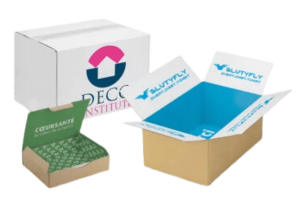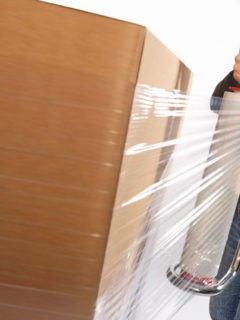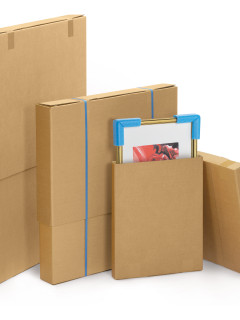…and how you can solve them!
Being responsible for the transport and logistics of an online store is not always easy. From stock and purchasing management to routing and transporting goods from the warehouse, it’s easy to lose track of countless details. Together, these details can have a big impact on both the customer experience in your online store and your store’s profitability, so there’s a lot to be gained from managing logistics well.
Here’s an overview of 6 common logistics challenges for e-commerce, with some tips on how to overcome them.
1. Optimise your warehouse to better manage orders
An important measure is to manage the incoming goods from your suppliers. This way you can reduce overstocks or, conversely, stock shortages.
But it’s also important to keep track of your stock so you can keep an eye on what is and isn’t available. Availability plays a crucial role in the experience you offer your customers, who should not be disappointed in terms of delivery times.
Your task is therefore to set up a sensible delivery strategy and organise your stock so that you can manage your inventory in the best possible way.
Solutions to implement
Choose a storage method that suits your business.
- The FIFO (first in, first out) method, where you store products that have been in stock for a long time as close as possible to the packaging area, is ideal for perishable products.
- The LIFO (last in, first out) method (the opposite of the FIFO method) gives you easy access to the latest products.
- The ABC method allows you to optimise space according to product turnover – the products most frequently ordered are closest to the pickers.

Implement a labelling method in the warehouse that clearly identifies each zone. For example, if you have chosen the ABC method, you can define zones A, B and C in the warehouse or label the shelves according to the different product types they contain.
Equip yourself with a Warehouse Management System(WMS) to manage your stock and inventory. It’s a software that allows you to track the receipt and issue of stock, so you always have a 360-degree view of what’s happening in your store.
2. Increase the speed of order fulfilment
You know it very well: your customers expect faster and more efficient logistics, and fast deliveries are an absolute must for many customers. In addition, you are facing competing e-commerce platforms that increasingly impose minimum delivery times, such as delivery within 24 or 48 hours.
For you as an e-retailer, this means not only that you need to choose carriers that respect these kinds of deadlines, but also that you need to optimise order picking so that you can pack your products quickly and efficiently.
Solutions to implement
Optimise the order handling area and especially the packing station. This will increase the packing speed, but also make the station more ergonomic to reduce the burden on warehouse staff. Make sure you choose the table carefully (it must be as ergonomic as possible) and place the most common tools within reach of your employees.
Read our guide to the packing station here
Choose time-saving packaging. Packaging such as automatic quick-release boxes (which assemble automatically by pressing the sides) or packaging with integrated protection can help you save precious seconds when packing.
Installing packing machinessuch as paper or air cushion machines. If you regularly use filler material in your shipments, these machines will increase the packing speed and ensure that your products are protected. You can also opt for strapping machines to speed up this stage of packing.
3. Provide a differentiating customer experience
To beat your competitors and retain customers, you should work on the customer experience around your brand. Logistics is also important for your brand! As an online store, this obviously means that you need to offer your customers a seamless online shopping experience.
Solutions to implement
Choose a carrier with a focus on the customer experience. Firstly, you need to be able to offer your customers a range of delivery options. For home delivery, your carrier needs to give your customers real flexibility and offer optimal tracking of your shipments.
Plan well how your customers will unpack your products. Choose packaging that makes it easier to open the parcels. For example, you can choose boxes with an adhesive strip instead of tape. If you use filler and protective packaging, you should also think about how it looks – for example, you could choose tissue paper in a colour that matches your brand. You should also think about the appearance of the delivery note and consider adding little surprises to the packaging to achieve that coveted ‘wow’ effect

Tissue paper in your brand’s colours provides a stylish presentation of your products
Customise your packaging – or create it to your specifications. In particular, you can highlight your brand colours on the packaging itself (inside or outside) or on the packaging’s filling. You can also include a slogan, a current promotion or a QR code to continue the online customer experience.

Printed tape is a simple but effective way to personalise your packaging. Here you can order printed tape in RAJA’s own tool.
4. Manage order returns in an efficient way
Returns are also part of logistics, and the way you handle returns can be a real selling point for your potential customers. Customers want to be sure they are ordering the right product and can return it if necessary.
Managing returns can be a difficult task for online stores. You need to regularly update stock levels and ensure that products are returned in optimal condition.
Solutions to implement
Provide good information in the online shop about the rules for returns. Communicate this on a separate page, but also on your sales pages. Make the return policy as clear as possible, including deadlines for when products must be returned and possible costs. If possible, offer free returns.
Choose packaging for the return. These are specifically designed to protect your goods both during the initial shipping and during returns. A good example is automatic quick boxes with a double-sided adhesive stripwhich can be reused immediately without having to look for other packaging.
Box for easy returns

5. get your logistics costs under control
Regardless of the size of your online shop, controlling your logistics costs is crucial for profitability. Every aspect of logistics costs can be optimised in one way or another.
Solutions to implement
Reduce the weight and volume of express and international shipments. Most carriers charge for these types of shipments based on the volume weight of the shipments. So take the time to eliminate empty spaces in your boxes by choosing packaging that is as appropriate in size as possible.
To learn more; read our post on volume weight here.’
Conduct regular tenders to find the right carrier at the right price.
Tendering will help you find suppliers that match your and your customers’ expectations and also help you minimise your budget.
If necessary, you can consider using an e-commerce platform for the logistics. You can consider outsourcing your logistics if you need to handle urgent parcels, deal with seasonal peaks or just want to focus on your core business. Some platforms may offer split shipping costs, allowing you to send your products at a lower cost.
6. Implement environmentally responsible logistics for your online store
Consumers are increasingly likely to opt out of brands that have environmentally hostile practices. Conversely, they remain loyal to brands that communicate their environmental and social commitments – and above all, stick to them.
You may already be working on the environmental responsibility of your products. But have you thought about the important role logistics plays in this green picture?
Solutions to implement
Choose environmentally responsible packaging for your online shop.
We recommend you take a look at RAJA’s 5 packaging principles. Here you can find inspiration to find packaging that is better for the environment.
The 5 packaging principles are to:
- Reduce: You can reduce the consumption of packaging by keeping the weight and volume of the packaging to the minimum required to provide good product protection. For example, you can use packaging with integrated protection, such as padded paper envelopes.
- Reuse: RAJA offers several types of packaging that are designed to be easily reused. Examples include returnable packaging, reusable plastic pallets or stackable plastic boxes instead of cardboard boxes for storage.
- Replace: To protect the environment, we need to replace packaging that is not recyclable or has a high environmental impact with environmentally friendly alternatives. There are many innovative new products to choose from, such as paper bubble wrap or something as simple as paper packing tape.
- Renew: Using bio-based packaging made from renewable natural materials helps reduce our impact on the environment.
- Recycle: To move towards a circular economy that minimises waste and makes the most of resources, we need to develop our recycling to give packaging a second life. Here, RAJA can offer a wide range of packaging made from recycled materials, such as e-commerce bags made from recycled plastic.
If you incorporate all these practices, you’ll be ready to implement more profitable, efficient and responsible logistics in your online store.














